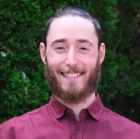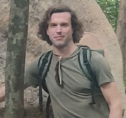Main Menu
Remote sensing uses sensors to detect and classify terrestrial objects—from the atmosphere to land and ocean surfaces—based on observable differences in the electromagnetic spectrum (EMS). Remarkably, this technology has existed for nearly 200 years. This presentation begins with a brief overview of the different types of sensors (active and passive) and main platforms (ground-based, aerial, and satellite) and examines the common types of data associated with each one. This general context allows for a review of conventional products widely used for mangrove management, including their extent, distribution, and dynamics.
We will then examine common challenges linked to conventional products and provide details on how the latest and most advanced tools and technologies are used to push new frontiers. These include structural characterization, tree-level studies, species zones (including hydrological and topographic attributes specific to each species), species types (based on unique biogeochemical spectral properties), and the use of multi-criteria assessments to determine not only where mangroves are, were, and could be, but also where they should (ecologically) be—critical information for restoration.
We will conclude by examining how the era of big data is being harnessed to make unprecedented global datasets easily and freely accessible.

Andrew Butt is a forest carbon associate at Tayo Climate Partners, based in Vancouver, Canada. He has five years of experience in project management, geospatial analysis, carbon quantification, and land use and land cover mapping. He currently supports Tayo in the development and management of forest carbon projects aimed at promoting sustainable solutions for climate change mitigation.
Andrew holds a Master’s degree in Geomatics for Environmental Management (MGEM) and a Bachelor’s degree in Geography, specializing in Environment and Sustainable Development, both from the University of British Columbia. His qualifications provide a solid foundation for his technical expertise in environmental management and geospatial technologies.
Throughout his career, Andrew has worked on various carbon projects worldwide, including afforestation/reforestation (ARR), reducing emissions from deforestation and forest degradation (REDD), improved forest management (IFM), and improved agricultural land management (ALM). He has collaborated closely with government agencies, NGOs, and private sector partners.

Trevor Jones brings over 20 years of experience in the use of geospatial data and field measurements to study and manage forests across Africa, Asia, North America, and South America.
Working alongside the marine conservation NGO Blue Ventures, he played a key role in the implementation and management of the Blue Forests project in Madagascar (2011–2015). This work included the first comprehensive assessment of total carbon stocks in Malagasy mangroves, the establishment of the country’s inaugural soil loss-on- ignition analysis at the University of Antananarivo, the launch of the flagship blue carbon project Tahiry Honko Plan Vivo, and the development of a mangrove mapping methodology using Google Earth Engine (GEM).
In addition to his extensive work on Madagascar’s mangroves, Trevor has contributed to blue carbon ecosystem studies in the United Arab Emirates (2013–2015). He has overseen the establishment of hundreds of reference plots for forest inventory and classification, guided the installation of surface elevation tables, and pioneered innovative approaches to leverage emerging tools, data, and technologies for mangrove mapping and monitoring.
Between 2018 and 2024, at Ostrom Climate Solutions, Trevor worked on a variety of forest carbon projects involving diverse forest types—from mangroves to high mountain forests—across the globe.
The Global Mangrove Watch (GMW) is an online platform developed through a partnership including Wetlands International, The Nature Conservancy, and Aberystwyth University, among others. Its purpose is to provide up-to-date, accurate, and accessible data on the extent, condition, and changes in mangroves worldwide. By combining satellite imagery with advanced geospatial analysis, GMW enables monitoring of mangrove evolution from 1996 to the present day.
This tool offers interactive maps, time series data, near real-time alerts of mangrove loss, and data layers on mangrove loss, gain, and coverage, which are valuable for scientists, policymakers, NGOs, and local communities. The alerts allow for the rapid detection of threatened or degraded areas, facilitating quick responses to prevent further deforestation or to plan targeted restoration actions. It supports decision-making for conservation, restoration, and coastal zone planning by providing indicators on biodiversity, carbon sequestration, and ecosystem services, thereby contributing to the sustainable management and resilience of coastal ecosystems..
GMW plays a crucial role in combating climate change and coastal ecosystem degradation by putting data at the service of action. Fully accessible online, it is a key resource to strengthen the resilience of coastal territories facing increasing environmental pressures.

Khadim Diop is a geomatics specialist and data analyst based in Dakar, Senegal, currently serving as GIS Specialist at Wetlands International Africa. For over four years, he has worked in geographic information systems, spatial analysis, and data visualization, developing interactive mapping solutions for various environment- and development- related projects. He holds certifications in artificial intelligence, machine learning, and cloud computing (AWS), enabling him to integrate modern and efficient approaches into his professional activities.